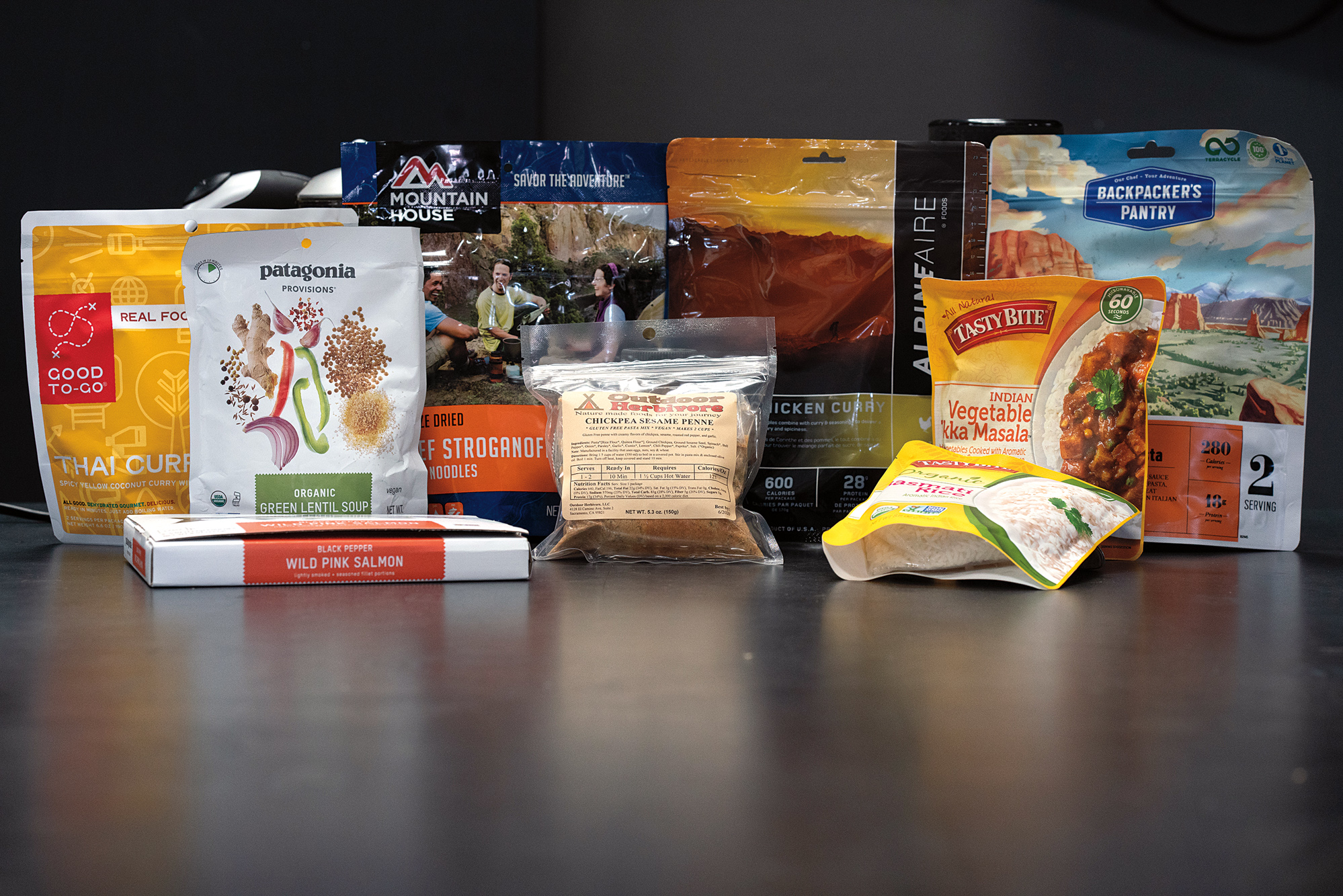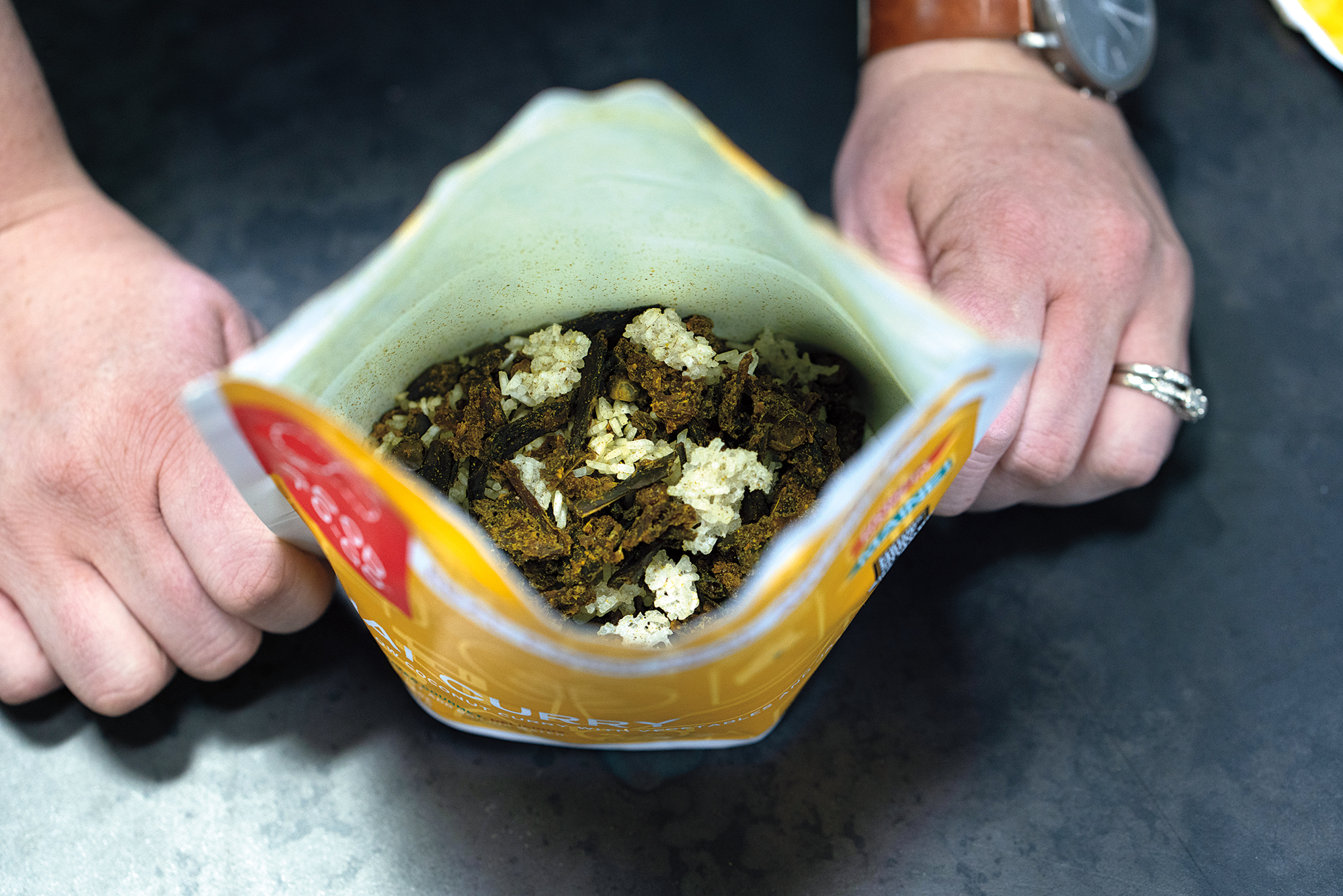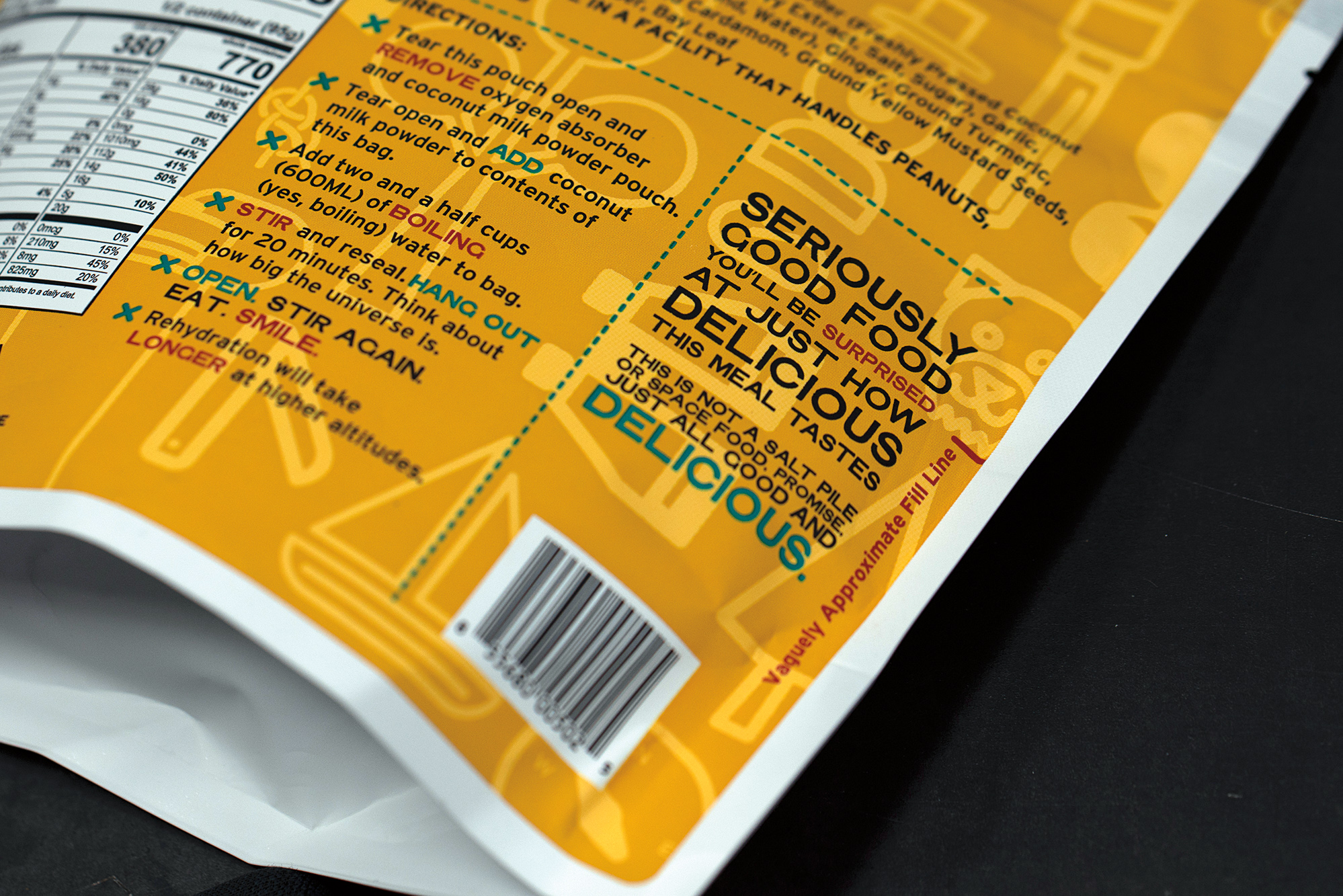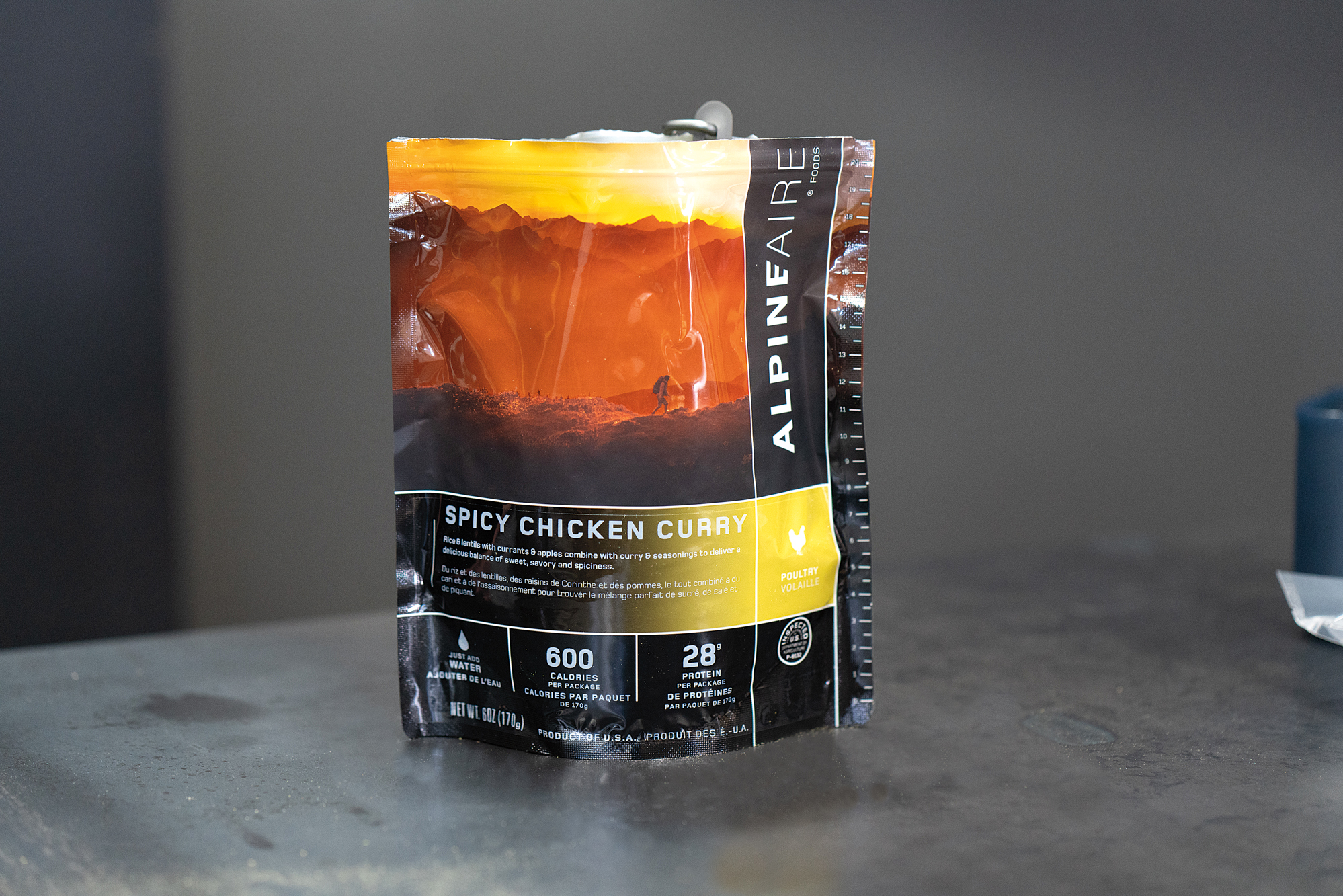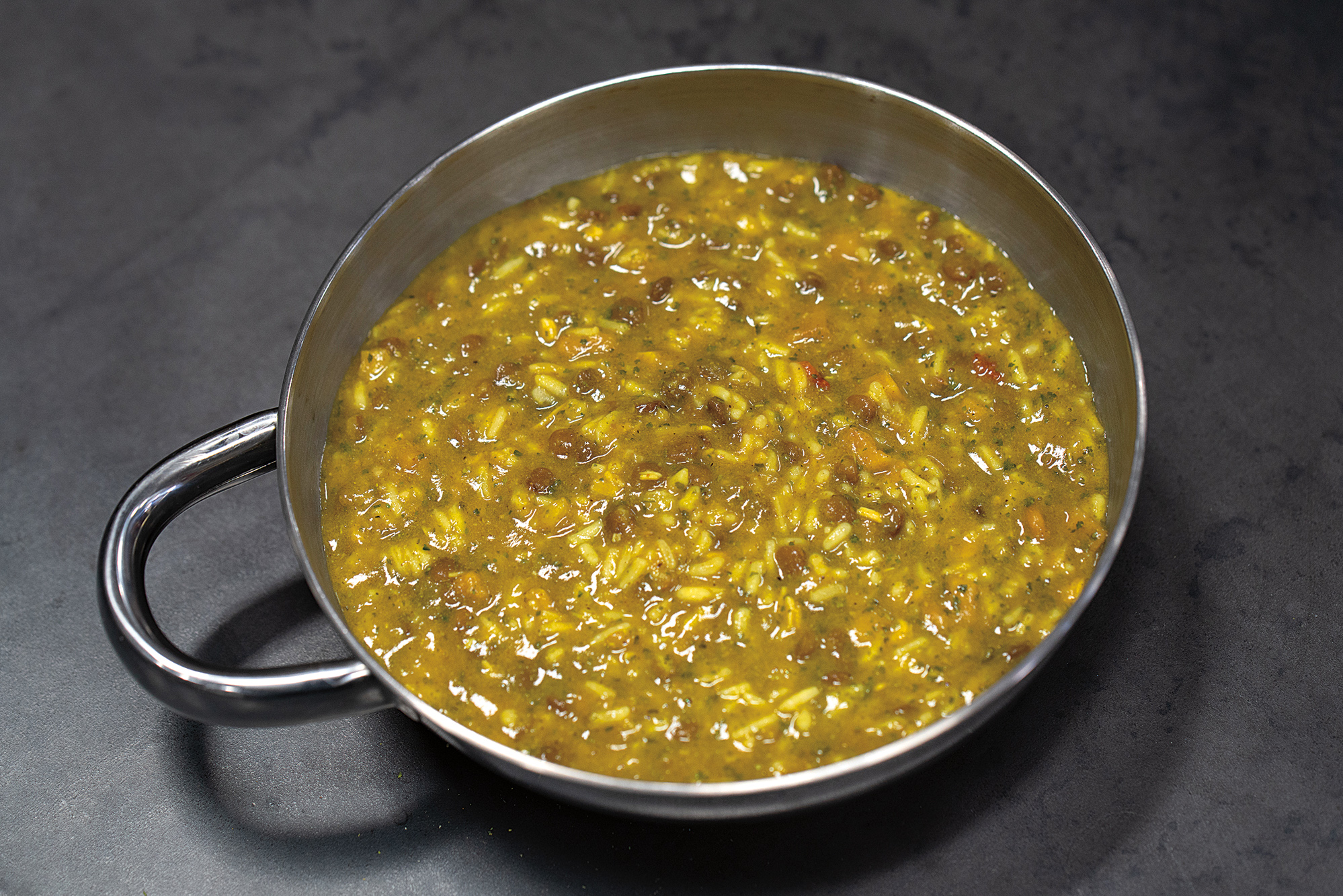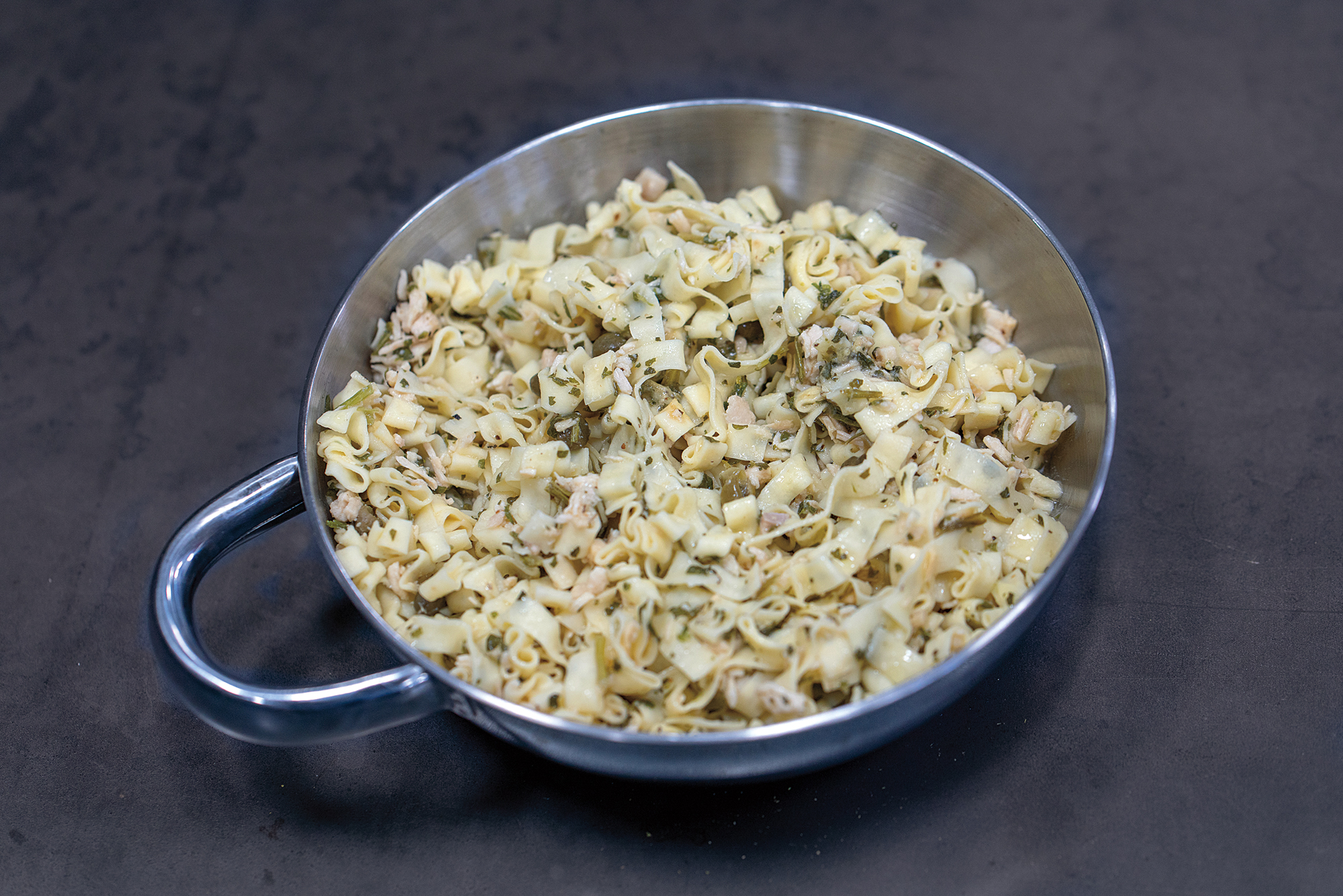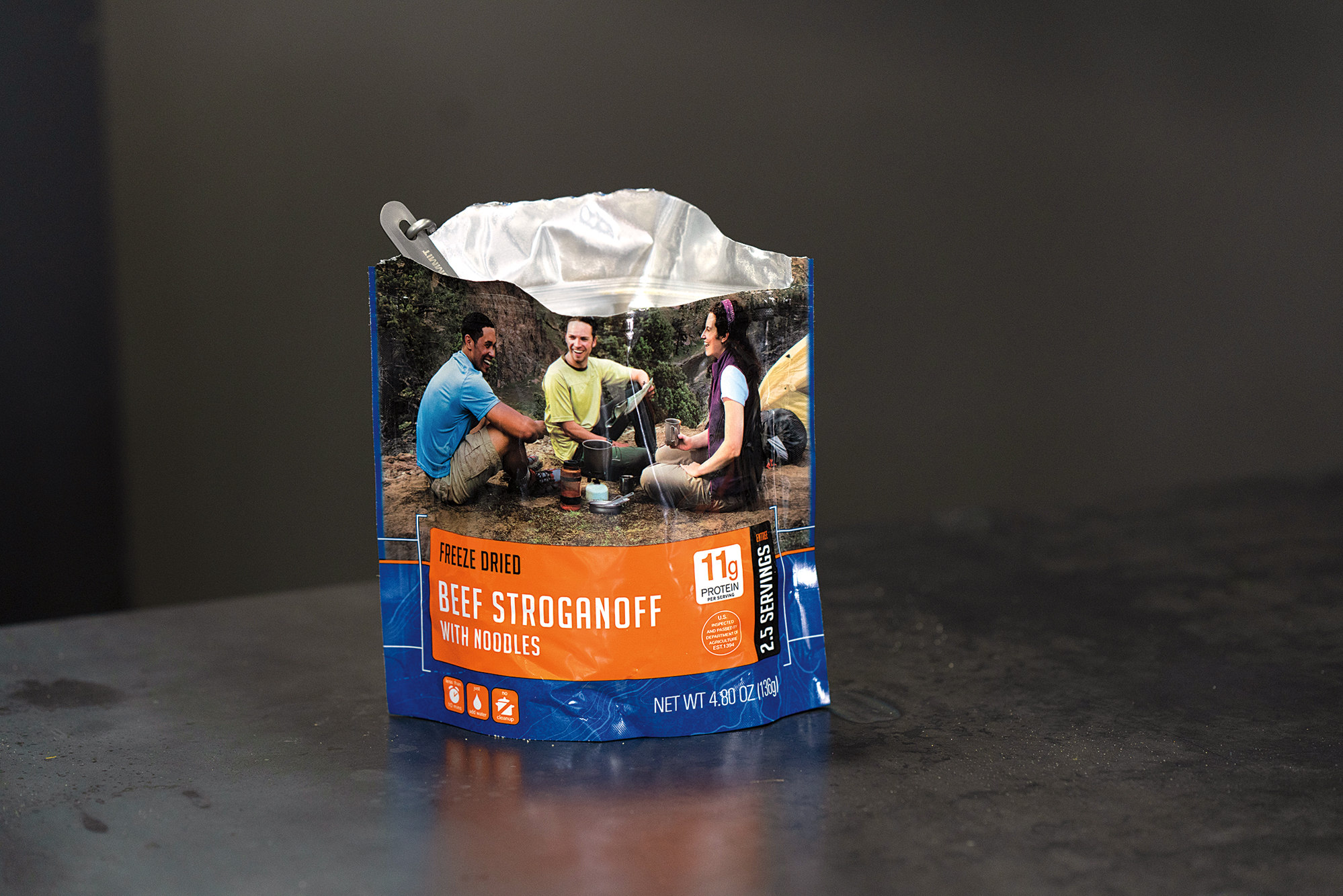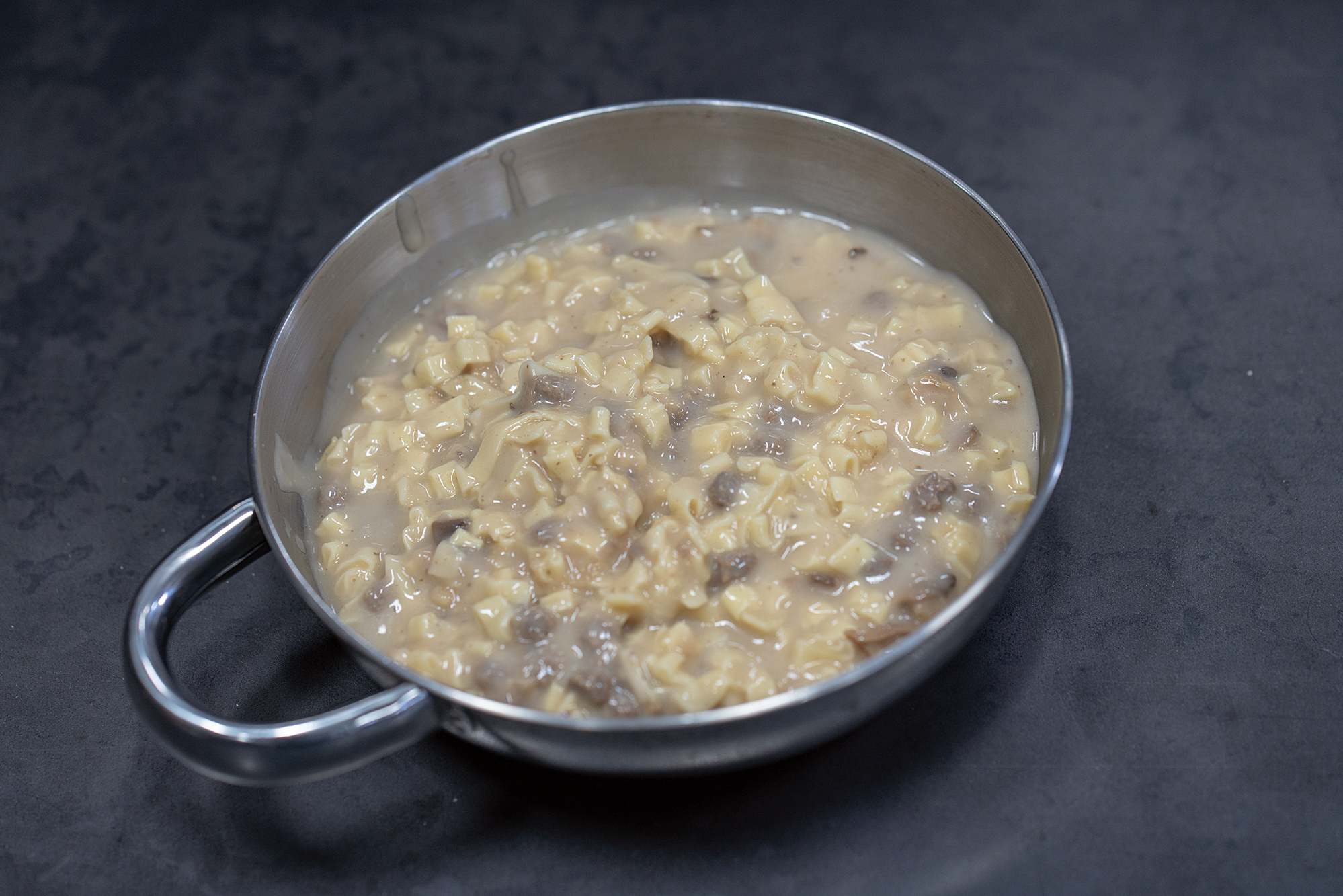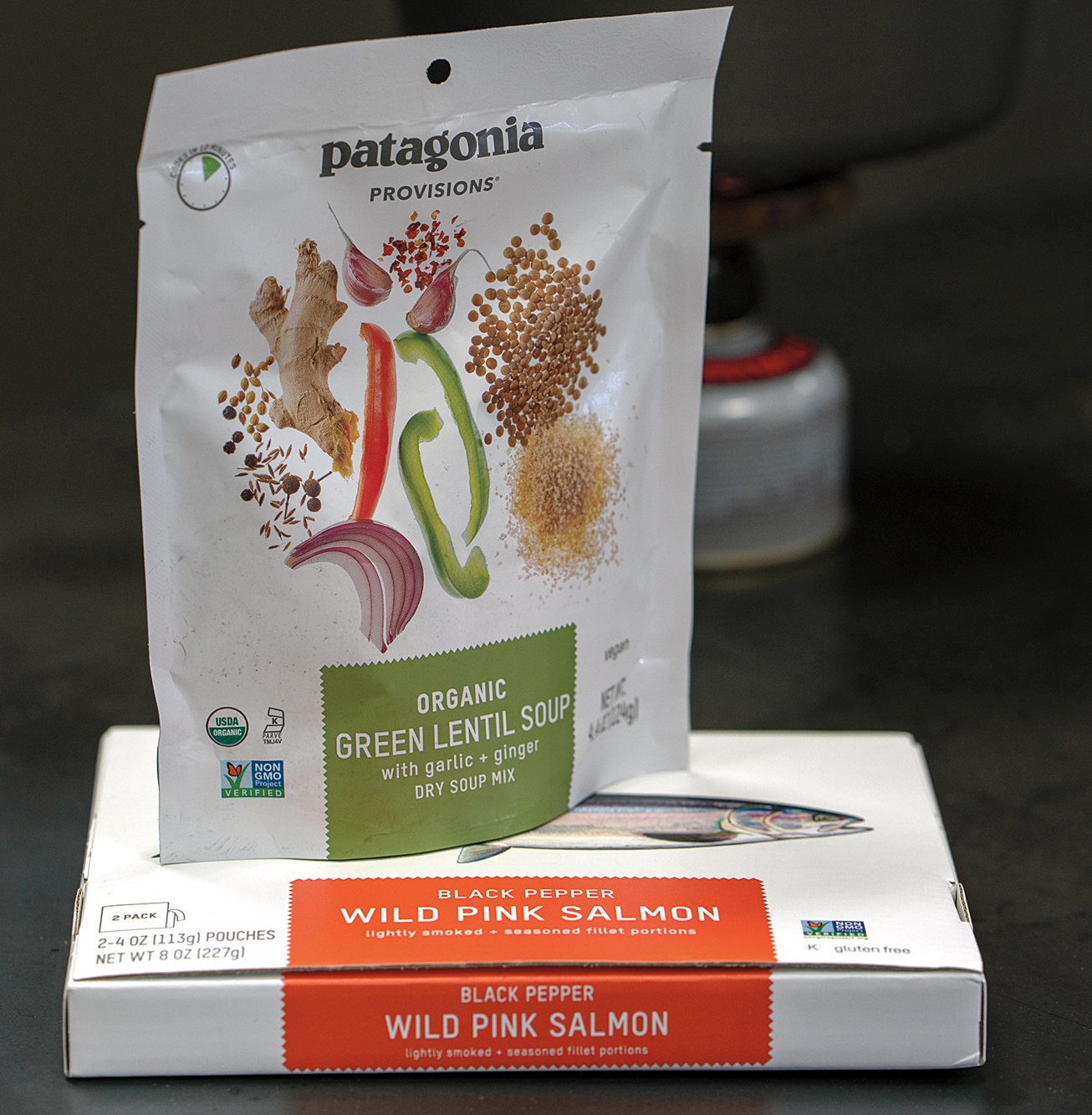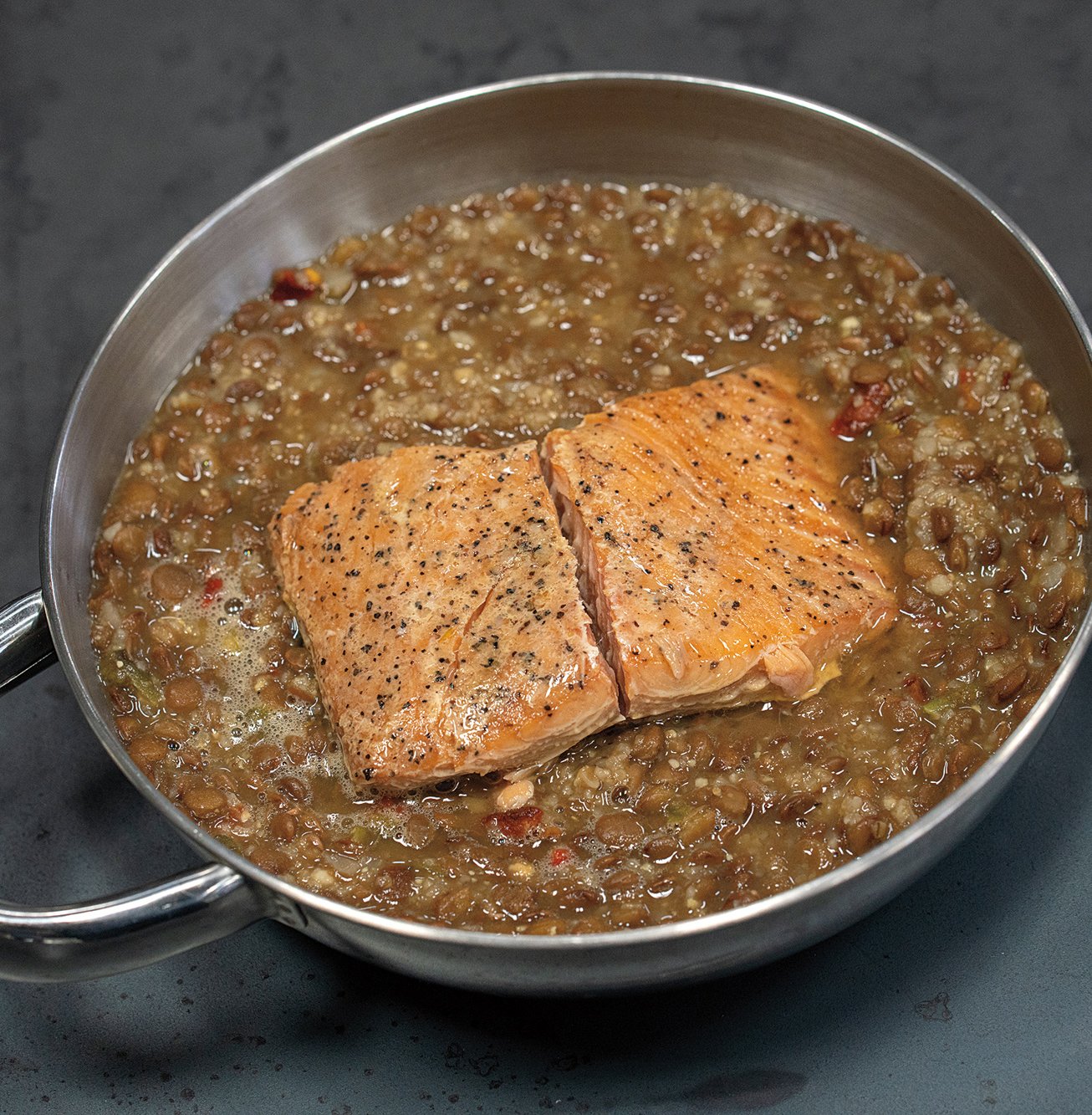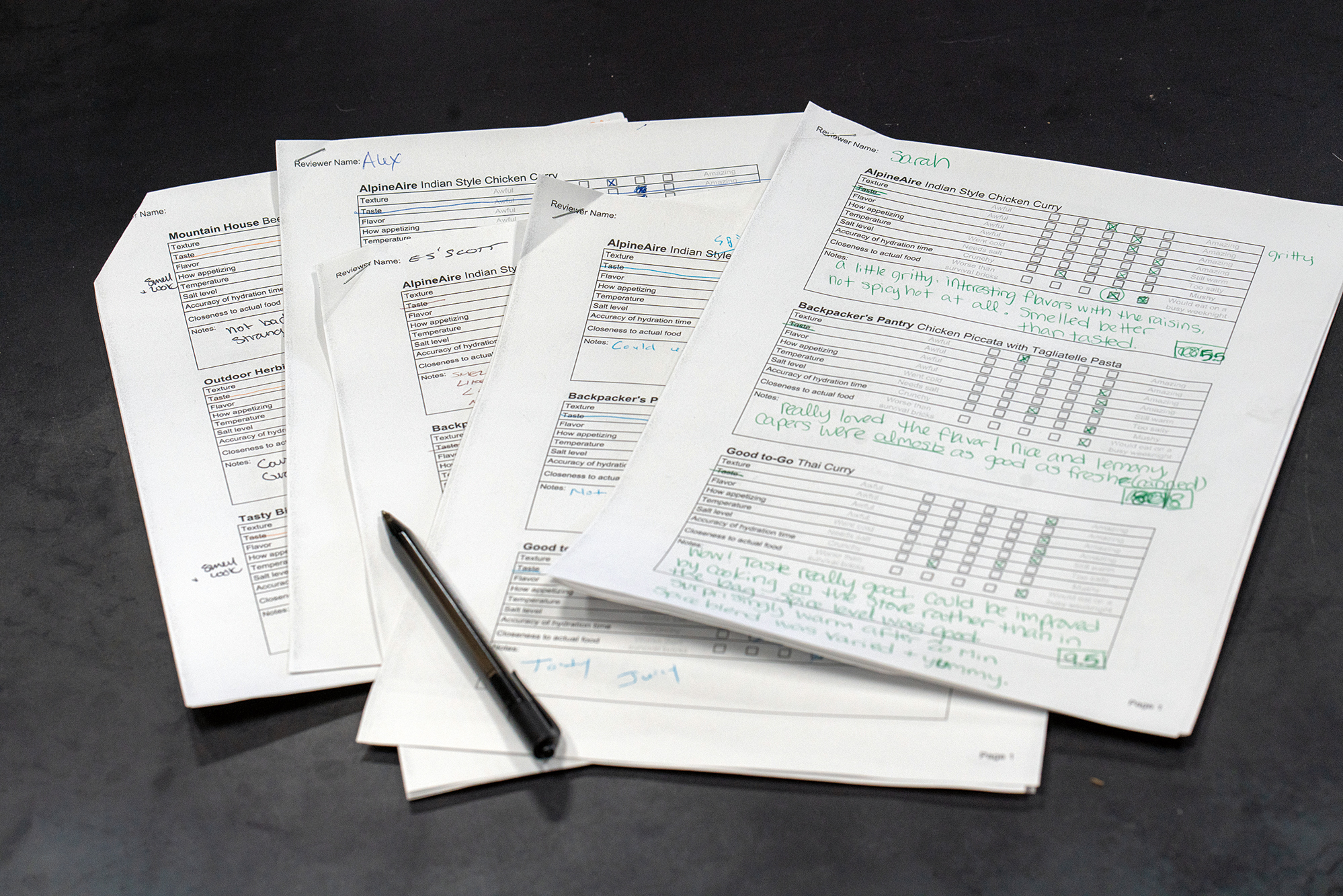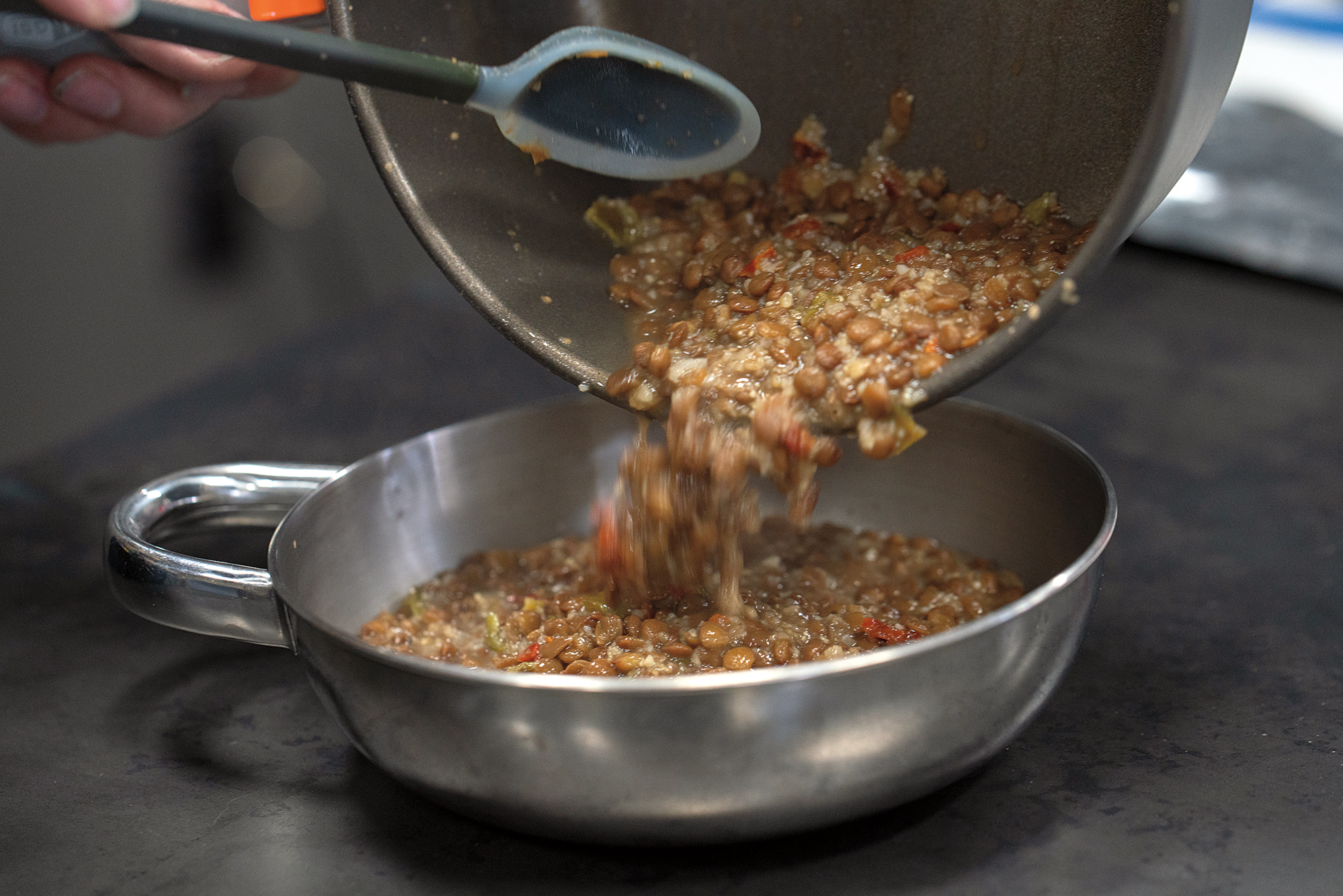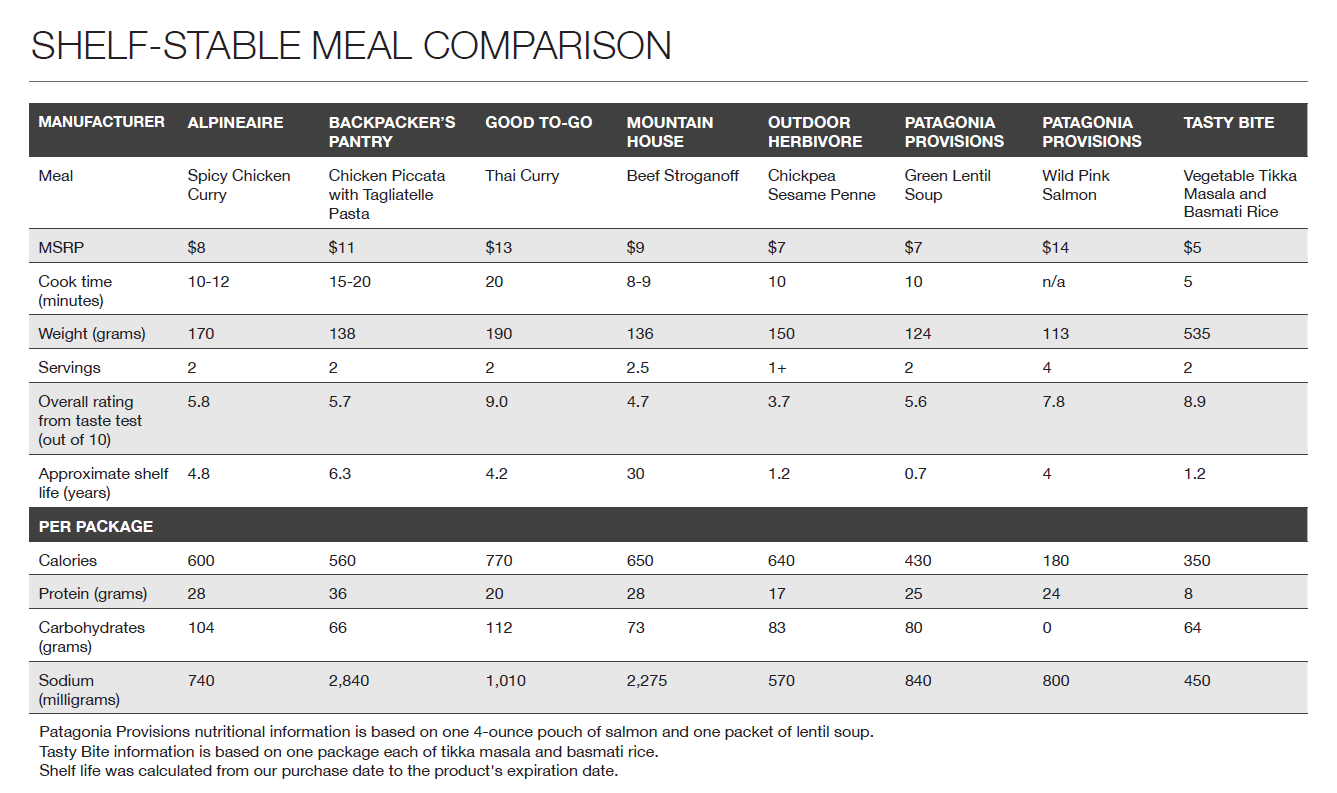Editor’s Note: This article was originally published in Overland Journal, Fall 2019.
I can still remember the smell of the horse shashlik, a tub of meat and indecipherable seasonings that we pulled from a freezer in the remote Russian village of Kosh-Agach. The only way I knew it was horse meat was from the line-art drawing of an equine on the lid, and the confirming nod and smirk from the storekeeper when I pointed and whinnied. Food was scarce in this extremely remote area of southern Russia, and this was the only meat available for sale at the outpost. We stocked up as best we could in anticipation of several weeks of travel on the formidable northern road across Mongolia. The border proved brutal with a combination of entry delays and an incident with the local military where a drunk driver crashed the ambulance he was driving into the border fence. We were almost out of food and had resorted to eating goat skull bartered from a local. The next night, camped on the Mongol steppes, we found ourselves officially out of fresh food. Fortunately, I had packed 72 hours of backpacking meals in the Jimny for just such an occasion, and the taste of that freeze-dried spaghetti with meatballs still lingers. For this comprehensive test, we evaluated the best shelf-stable food on the market and employed the taste buds of five members of the Overland Journal team to help choose a winner.
WHY PACK SHELF-STABLE MEALS?
As with anything we pack in our vehicles or motorcycles, even food requires justification. Simplicity should always remain the mantra, leaving any grand aspirations of meal prepper nirvana at the altar of payload. However, that makes a case for having 72 hours of shelf-stable meals in the vehicle. They are often designed for backpacking; the packaging is compact and lightweight, and the food requires minimal cooking complexity to prepare. The newest meals are also quite delicious and notably healthy, so it is the perfect excuse to turn a day trip into an overnighter—everything is already on hand. I keep a combination of backpacking meals and dry goods with me, along with a simple Primus Lite+ all-in-one stove, and a few bowls and sporks. I have used these meals many times on the road or during impromptu camps. They are essential to have for backup when the fridge stops working, or even to help someone else in need.
Backpacking meals can also be a necessity in certain conditions where it is impossible to keep fresh food for extended periods of time, such as during long desert crossings or polar expeditions. I survived on freeze-dried and dehydrated meals for months during my Antarctic and Greenland crossings, and they never failed to warm the belly and feed the spirit when it was -40°. These meals are also a key consideration for remote motorcycle travel, where weight and space are at a premium. With that, the motorcyclist should also be looking for maximum calorie load from the meal, as riding adventure bikes in the dirt is a serious energy expense.
SELECTING THE BEST MEALS
The best piece of advice I can give is to try the meals before making a bulk investment and read the reviews on popular outdoor retailer sites. The flavor and quality of these products vary wildly, with some tasting worse than an MRE and others being hardly distinguishable from something served at your local diner.
STORAGE LIFE
It was surprising how much the storage life varied in the brands we chose, from as little as eight months from the date of purchase (Patagonia) to nearly 30 years for the longest lasting (Mountain House). This wide variation is due to the difference between freeze-drying, dehydrating, and in the case of Tasty Bite, the use of retort pouches and a process similar to canning. Freeze-drying is the most modern and technical of the processes, perfected during World War II as a method of preserving plasma, food, and medications. There are several advantages to freeze-drying, including lighter weight, a much longer shelf life, and higher retention of nutrients because of the lack of heat used in the process. Dehydrated meals take much longer to prepare and cook. Curiously, almost all of the available backpacking meals are dehydrated, not freeze-dried.
WEIGHT AND PACKABILITY
This consideration is primarily for the motorcyclist, but the packaging of these meals varies widely, particularly when you compare the calorie density. Mountain House is the bulkiest in the test and has one of the lower caloric loads. It is also important to calculate how much water is needed for rehydrating and plan accordingly. In areas where fresh water is plentiful (and can be filtered), then rehydration is not a problem. However, in areas where hauling water is a factor, there is no downside to bringing shelf-stable meals such as Tasty Bite.
HEALTH, NUTRITION, AND CALORIE DENSITY
Travelers can have a wide range of nutritional and dietary restrictions or preferences. Fortunately, it is easy to find vegan, vegetarian, or pescetarian meals that are gluten free, dairy free, etcetera. Those with nut allergies will have a more difficult time as the Backpacker’s Pantry was the only option that did not have a nut warning. It is also possible to find meals with higher protein content, but it is far more challenging to purchase ketoand paleo-friendly options. I was impressed by the number of meals that were organic or non-GMO, with Patagonia Provisions having the strongest overall environmental stance.
FLAVOR AND PALATABILITY
In my experience, nearly every backpacking meal tastes amazing at the end of a long day of hiking, so we tested this lineup from the comfort of our offices and in a controlled environment. The spicier offerings did better, but texture and smell were both still factors. The Thai and Indian dishes were loved, while any attempt at sounding fancy (e.g., chicken piccata) was generally confronted with scrunched noses and unfinished samples.
EASE OF PREPARATION
For preparation, we evaluated how easy it was to open the package and how much water was needed for rehydration. The dehydrated meals took the longest to make, with some taking as long as 20 minutes. As the Good To-Go instructions suggest, “Stir and reseal. Hang out for 20 minutes. Think about how big the universe is.” That resulted in some wonderful conversation among our team— good advice.
TESTING CRITERIA
We emphasized a combination of objective and subjective criteria, with a weighting toward taste as determined by our panel of judges. We selected brands based upon their reputation in the industry and chose a broad range of options for travelers with diverse food needs. For the individual meal choices, we used both REI and Amazon consumer feedback rankings to determine the recipes that had the highest overall ratings for the manufacturer. There are certainly more options out there, but it is our job to thin the herd down to a manageable few.
On testing day, we gathered five team members and one dog to our editorial suite for a long lunch of tasting, banter, and judging. Fortunately, our team represents a wide range of foodies, with some being more interested in texture, others being more excited about taste, and a few being most interested in the nutrition of the meals. Atlas, the malamute, was an enthusiastic participant as well, and he did like some more than others (beef stroganoff for the win). We purchased three of each selection and prepared two for the trial. The first was used for sampling, and the second was used to validate cook time and to assess plating, overall smell, and palatability.
Managing Editor Sarah Ramm boiled water in an electric pot to ensure repeatability and ease, then measured the liquid precisely to the manufacturer’s recommendation. The meal was then stirred as directed and left to cook for the prescribed time in our 74°F office. Any variations to cook time were recorded, with most requiring additional time due to our locale’s 5,164-feet elevation. The meal was served in 12-ounce paper cups (new cups with each option), and the evaluators made notes and ratings on texture, flavor, appeal, temperature, salt level, accuracy of hydration, and closeness to actual food. Additional comments were noted, and all of the scores were aggregated into separate overall ratings, weighted ratings, and then an overall combined scoring. The evaluation was certainly dynamic but filled with critical commentary and impressions. I believe it would be impossible to accurately and appropriately evaluate these meals without a quorum of overlanders to balance individual biases.
ALPINEAIRE | SPICY CHICKEN CURRY
A company with a 40-year history of making quality, easy-to-prepare goodness.
PROS
Long shelf life for a dehydrated meal
Quality, recognizable ingredients, and
no preservatives
Many gluten-free options
“It smells great; I like the raisins—
looks okay, not spicy.” -Scott
CONS
Lower overall calorie load
Needs more spice
“It’s not spicy, pretty bland, the curry
wasn’t really there, gritty—looked more
like curry than it tasted. ” -Alex
AlpineAire is a subsidiary of the Katadyn Group, well known for brands like Optimus and SteriPen. In business since 1979, the company is celebrating 40 years of producing high-quality, healthy freeze-dried and dehydrated meals for the outdoors and emergency use. Their products are known for their variety, preparation convenience, and purity of ingredients with no artificial preservatives, flavorings, colorings, MSG, or white sugar. The packaging is durable and easy to open, and has a ziplock seal for cooking. The package size is large enough for water, but not too big to complicate storage. The base of the bag is wide and stable, permitting freestanding while cooking or eating.
The cooking process was straightforward and efficient with a 12-minute cook time, the upper end of their recommendation, but consistent with the test elevation. Once finished, the consistency was notably wet, more like a stew or soup than a typical curry with rice. It would benefit from less water. A delicious smell permeated the room on opening the bag, but the compliments slowed from there. Overall, evaluators found the dish to be far too light on spice and flavor with a gritty or grainy consistency. These tasting notes are often unnoticed or easily forgivable after a 10-mile hike, but relevant for car camping. I appreciated the clarity of labeling on the packaging and the relatively healthy ingredients list, the only additive being maltodextrin.
600 CALORIES | 28G PROTEIN | $8, TWO SERVINGS | ALPINEAIRE.COM
BACKPACKERʼS PANTRY | CHICKEN PICCATA WITH TAGLIATELLE PASTA
This is a better option for emergencies than camping.
PROS
10-year shelf life (freeze-dried)
High protein
Sturdy packaging
“I loved the flavor, nice and lemony.
The capers are almost as good as
the normal canned ones.” -Sarah
CONS
Chemical smell
Preservatives and artificial additives
Higher than average retail price
“No, thank you, it smells really bad, like
chemicals, and I don’t want to eat this.
The capers are not helpful—strange
flavor.” -Stephanie
For over 60 years, Backpacker’s Pantry has been producing camping meals, their first efforts inspired by a Girl Scout trip gone awry. As a company, it is still a privately held, family-owned brand that makes the meals in Boulder, Colorado. Their recipes are made from both freeze-dried and dehydrated ingredients with an estimated shelf life of up to 10 years for the packaged options, and 25 years for their #10 cans. We found it somewhat curious that the lot we received had already sat unsold for nearly four years. The package itself is durable and sturdy, arguably the most robust (but also the largest) of the test. This ruggedness made opening the package difficult, but closure for cooking was simple.
Cooking requires 2 cups of boiling water and 15 minutes of dwell time after stirring. When served, it looks appealing and home cooked. The pasta kept its shape, and the dish splashed with the color of the capers. Chunks of chicken were present throughout, which resulted in a high protein content, complemented by the fat from the olive oil. A few people noted a chemical smell, but everyone was excited about the capers. However, flavor reports were either listed as mediocre, or in the case of Sarah, amazing. She expressed her love for chicken piccata and found the lemon flavoring and capers to be perfect, but she did comment after having leftovers the next day that the meal upset her stomach. Another evaluator found it inedible, while I found the taste as being middle of the range. It is important to note that this product does use several additives and preservatives.
560 CALORIES | 36G PROTEIN | $11, TWO SERVINGS | BACKPACKERSPANTRY.COM
GOOD TO-GO | THAI CURRY
BAM! This tastes so good.
PROS
Highest evaluator taste rating
Calorie dense
Zero preservatives or artificial additives
“Yes! It actually looks, smells, and tastes
like real food, like I got it from a Thai
restaurant. It’s spicy, as curry should be—
tastes like more.” -Stephanie
CONS
Long cook time (20 minutes)
High sodium
Low protein
“It could be improved by cooking on the
stove rather than in the bag because of
the time it took.” -Sarah
The story of Good To-Go warms the heart; the business was started by Jennifer Scism, who also serves as head chef for the dehydrated recipes. Her résumé includes running a New York Times fourstar restaurant and being a graduate of the French Culinary Institute in Manhattan. She traveled the world for a year, visiting over 20 countries and discovering foods that would influence her future creations. In 2005, she won the Iron Chef (as part of the first all-women team), and in 2008 was awarded the Golden Fork Award. She now runs Good To-Go with her husband, cofounder David Koorits, and they have focused entirely on making healthy, greattasting meals for adventurers.
Preparation is straightforward and calls for 2.5 cups of boiling water. The coconut milk powder package is added, and then everything stirred thoroughly. From there, some patience is required, as the Thai Curry has the longest rehydrating time of the test, a reflection of the lack of additives and that all of the contents are dehydrated, not freeze-dried. The quality and flavor of the entrée can best be described as delicious, and won our test for overall flavor, with everyone finishing their sample. I even ate the leftover bag the next day, and several evaluators said they would eat the meal at home.
770 CALORIES | 20G PROTEIN | $13, TWO SERVINGS/$7, ONE SERVING | GOODTO-GO.COM
MOUNTAIN HOUSE | BEEF STROGANOFF
This will last as long as a Land Cruiser and is nearly as appetizing.
PROS
30-year shelf life
Quick cook time
“Not bad; Atlas likes it.”
-Stephanie and Atlas
CONS
Performed poorly in taste test
Strong artificial and chemical flavor
Monster sodium load
“It has a chemical and artificial
flavor, salty. The beef bits are
crunchy.” -Scott
The oldest brand in our test, Mountain House, was started in 1969 during the Vietnam War when the US military put out a request for long-lasting, better-tasting, and lighter rations for longrange patrols with the Special Forces teams. They continue to make military rations, but also specialize in backpacking, camping, and emergency preparedness. For 50 years, they have produced freeze-dried meals that last up to 30 years in storage, and have been to the moon and back. We selected beef stroganoff, a popular offering, and one rated highly among consumers.
The package is one of the bulkiest in the test, and unnecessarily so. It is also difficult to open and leaves a massive (nearly 3-inch) and unusable top strip that ends up in a landfill. By comparison, the Good To- Go top tear is 1/3 the size. On the positive end, the freeze-dried meal cooks in only nine minutes. Once plated, it scored lower on overall appeal and was generally described as smelling bad. Three of our evaluators rated the taste as slightly above average, while the other two scored the meal as below average to awful. It is extremely salty on the palate, which may not be ideal if the meal is used after endurance activities. This brand is perfect for leaving in the vehicle for emergency preparedness but will disappoint most campers in regular use. Additives are included, and it is worth noting that modified corn starch, maltodextrin, carrageenan, and others all hit the ingredients list.
650 CALORIES | 27.5G PROTEIN | $9, TWO AND A HALF SERVINGS | MOUNTAINHOUSE.COM
OUTDOOR HERBIVORE | CHICKPEA SESAME PENNE
A healthy option for you and the planet, but it may not please all palates.
PROS
Vegan, gluten free, non-GMO,
and certified organic
Low sodium
Compact packaging
“The noodles were very grainy
but had a lot of flavor.” -Alex
CONS
Requires cooking in a pot
Low protein
Bland flavor, may need salt
and pepper
“The dish needed salt as it was
bland.” -Scott
Outdoor Herbivore is a charming company with a genuine story of entrepreneurial dreams, ethical goals, and ingredients that are good for us and the planet. While not every overlander will want vegetarian or vegan meals, there is no arguing the healthy contents of the penne dish we selected. The company was founded by Kim Safdy, with a focus on locally sourced, renewable, and sustainable foods that include no flavor enhancers, preservatives, MSG, fillers, sulfites, nitrates, GMOs, textured vegetable protein, or artificial ingredients. The plant ingredients are certified organic, and everything is packaged in minimalist recyclable bags that are both space efficient and resealable.
Preparing the meal requires a pot and 1.5 cups of water. After bringing the water to a boil, the pasta mix and enclosed olive oil package are stirred in and continue to boil for one minute. Then the heat is turned off, and the contents cook covered for 10 minutes. Additional water will be needed to clean the pot. Once plated, the meal looks good with plump rice and quinoa flour pasta with a smattering of color and texture from bell peppers, parsley, and sesame seeds. The flavor is admittedly bland without using the supplied salt and pepper packets, and the pasta texture will be foreign to anyone that has not experimented with gluten-free options. But the nutrition and overall healthiness of the dish stand out, even if the taste fell short. If the goal is to eat to live, not live to eat, then this is one of the best options available. The overall protein is the lowest in the test; consider adding beans or smoked fish to the dish.
640 CALORIES | 17G PROTEIN | $12, TWO SERVINGS/ $7, ONE SERVING | OUTDOORHERBIVORE.COM
PATAGONIA PROVISIONS | ORGANIC GREEN LENTIL SOUP AND WILD PINK SALMON
This pairing is both filling and nutritious, made for protein and planet lovers.
PROS
Certified organic, non-GMO,
sustainably caught
Compact packaging
Real smoked salmon fillets
High protein
“This is a healthy and hearty option.” -Scott
CONS
Requires cooking in a pot
Needs to be paired with the
salmon for flavor and protein
Low spice
“These are good if you like lentils, but are
no different than regular ones with added
seasoning.” -Sarah
One of the oldest, largest, and most respected brands in the test, Patagonia has only recently started producing shelf-stable food. Founder Yvon Chouinard has a passion for food and sustainable and organic standards. As a result, they have developed a high-quality offering that is non-GMO, organic, and produced with no chemicals, additives, or preservatives. Their range of products includes everything from vegan soups to smoked salmon, buffalo jerky, and mussels. We selected a serving of their organic green lentil soup and complemented it with a serving of their wildcaught, lightly smoked pink salmon fillets, making a complete meal.
For preparation, the soup requires a pot (cannot be cooked in the bag) and it is recommended to bring the 2 cups of water to a boil before simmering the contents for 10 minutes. To save fuel, it is also possible to boil for one minute and then cover and let sit for 9 minutes. Once plated, we added 4 ounces of the wild pink salmon to the dish, increasing the protein by 24 grams and adding a bump in overall flavor and nutrition. For taste, the meal received better than average scores, with evaluators noting the overall balance of flavor and heartiness. It is worth noting that there are no complete entrées available at this time, and pairings are made à la carte. The availability of jerky, salmon, and mussels are a win for the overland traveler, and the fish keeps for four years.
610 CALORIES | 49G PROTEIN | $14 SALMON, FOUR SERVINGS/$7 SOUP, TWO SERVINGS | PATAGONIAPROVISIONS.COM
TASTY BITE | INDIAN TIKKA MASALA AND BASMATI RICE
These are all-natural meals that make every bite tasty.
PROS
Looks and tastes authentic
Serious value and easy to find
Requires no added water
“Absolutely delicious, it even had
some good spice to it.” -Alex
CONS
Low protein
Requires pot for submersion cooking
“I would like more sauce, so I would use
a two tikka masala to one rice ratio. It’s
low protein so you might consider adding
more from another source.” -Sarah
When I first heard of Tasty Bite years ago, I was driving around Southern California with fellow adventurer Sinuhe Xavier going from store to store looking for these elusive delicacies—highly recommended by him as the perfect camp meal. We finally found them, and Sinuhe was right.
As a company, Tasty Bite has been around for 25 years making easy-to-prepare, flavorful, and all-natural Indian food made in India. Their entrées range from coconut vegetables in yogurt to bags of brown rice and lentils. We chose the vegetable tikka masala and basmati rice, a perfect pairing of gluten-free, vegetarian, kosher, non-GMO goodness.
These are shelf-stable meals, not dehydrated or freeze-dried so they can store for approximately 18 months in moderate temperatures. They do not have to be refrigerated because they are prepared similar to canning in retort pouches, and the contents do not need to be cooked, only reheated for palatability—they can even be eaten right out of the package without heating in a pinch. For this process, we submerged the two bags in a pot of boiling water and heated them for about five minutes, the fastest preparation time of the test. Once plated, there were lots of oohs and aahs from the evaluators, commenting on the smell and its favorable appearance. The meal received high scores on texture, flavor, and appeal; Alex gave it perfect marks and the comment of “absolutely delicious.” There are few complaints with these meals, so long as you love Indian food.
700 CALORIES | 16G PROTEIN |$3/TIKKA MASALA, $2/RICE, TWO SERVINGS | TASTYBITE.COM
CONCLUSIONS
As evaluators, we often come into a test with preconceived notions as to how the evaluations might go, and for this one, I was convinced it would be clinical, and honestly, quite boring. Fortunately, learning about dehydrating, freeze-drying, and the history of these interesting companies proved to be time well spent. The taste testing with the team was also an exercise in hilarity, with much laughter; Atlas is looking forward to the next one. This combination of structured, objective testing and charting was nearly perfectly balanced by the broad sample of five subjective judges. There was only one meal (chicken piccata) where the group deviated markedly. For the most part, it was obvious which meals were really good, and which were just tolerable. As overlanders, we certainly get remote, but the food doesn’t need to be awful or even okay. Fortunately, there are clear winners.
For the Value Award, there is only one contender, and that is Tasty Bite’s tikka masala, which is delicious and can be purchased in bulk for as little as $3 per package. The price is even more impressive when the quality of the ingredients are considered, although most are not organic. The entrées can also be chosen for nutrition goals: higher protein from their Madras lentils or the richness of mushroom masala with garlic brown rice. These meals have been a staple of mine for nearly a decade and have never disappointed.
The next most value-oriented option is the Outdoor Herbivore, which is worth mentioning as a dehydrated and extremely healthy alternative. I used these meals on a multi-day backpacking trip in Comb Ridge in Southern Utah, and appreciated the quality of the ingredients.
The Editor’s Choice Award came down to Good To-Go and Patagonia, with some consideration toward Tasty Bite, but it was ultimately eliminated due to the shorter (and more temperature sensitive) shelf life. For Patagonia’s first effort in shelf-stable meals, the results are impressive, particularly the availability of packaged proteins, all organic ingredients, and the lack of additives and preservatives. For the traveler that demands organic ingredients, this is your champion. Even with all of these positives, the overall taste rating was well behind the winner, Good To-Go. Good To-Go creates a perfect balance of exceptional flavor, quality ingredients, kitschy and thoughtful packaging, and sufficient calorie load. The overall rating of the Thai Curry was 8.9 out of 10, with only one evaluator giving a 7 and three giving 9.5 or higher. It was the only dish that every evaluator finished, with a few going back for seconds. My only complaint is the lower protein content and the longer cook time, but in the end, it did encourage us all to contemplate how big the universe is, a great campfire conversation at the end of a dusty trail.
EDITOR’S NOTE: Anytime we encounter an anomaly in our testing, we try to validate the results through additional evaluation. Due to Backpacker’s Pantry high score in online reviews, in contrast to our in-house testing, we decided to order a different flavor, chicken vindaloo. This meal was notably better in spice and overall palatability, but the chicken bits were overly chewy and with limited taste. The curry was strong, and the rice nicely cooked. At least with the Backpacker’s Pantry brand, the edibility of the meals varies widely. While somewhat better than the chicken piccata, the additional testing would not have influenced the overall scoring.


